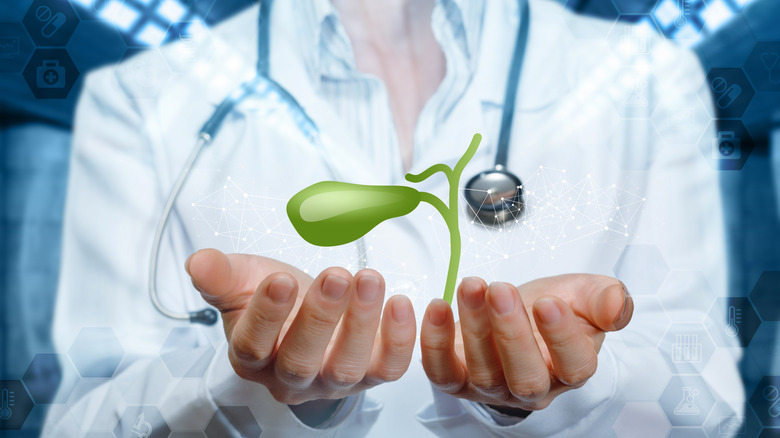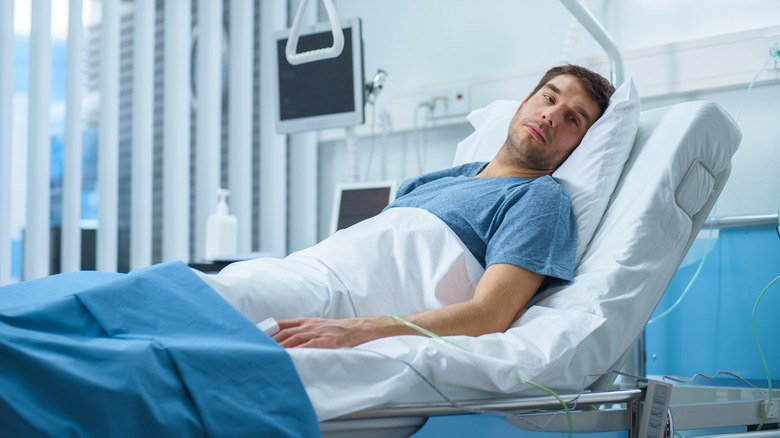What Happens To Your Body When You Get Your Gallbladder Removed?
The gallbladder is a pear-shaped organ that is located under the liver on the right side of your abdomen (via Healthline). It stores bile that is made in the liver, which helps you digest food properly. Sometimes, issues with the gallbladder can arise, and it may need to be surgically removed. You do not need your gallbladder to live, and the body can function normally without it. In a person without a gallbladder, bile moves directly from the liver to the intestines to help the body digest food.
Common reasons for gallbladder removal include gallstones (hardened deposits of digestive fluids), acute or chronic inflammation of the organ caused by gallstones, and bile duct stones. While certain medications may dissolve gallstones, they often take a long time to work. If symptoms become too painful, your doctor may suggest surgery. Luckily, in most cases, gallbladder removal is a relatively simple procedure and can be done through tiny incisions.
Side effects from gallbladder removal
In the majority of cases, having your gallbladder removed will prevent future gallstones, according to the Mayo Clinic. Side effects of the surgery are usually minor and resolve on their own, and can include diarrhea and flatulence, or constipation as a result of anesthesia used during surgery (via Healthline).
In rare cases, it's possible for the surgeon to damage the intestines during a gallbladder removal procedure, causing cramping. Some pain is to be expected after any surgical procedure, but if pain worsens after several days, call your doctor. It's also rare but possible for a stone to remain in the bile duct after surgery. This may result in severe pain, infection, or a condition called jaundice that leads to yellowing of the skin.
Generally, if there are no complications you should have no trouble recovering from gallbladder surgery. You should avoid physically straining yourself for two weeks after the procedure, and may be told by your doctor to adhere to a liquid or bland diet for the first few days. After that, you should be able to re-introduce your usual foods. It's important to stay hydrated and eat plenty of fiber, which will aid in digestion. Fiber-rich foods include nuts, seeds, whole grains, broccoli, cabbage, brussels sprouts, cauliflower, and high-fiber cereal.


